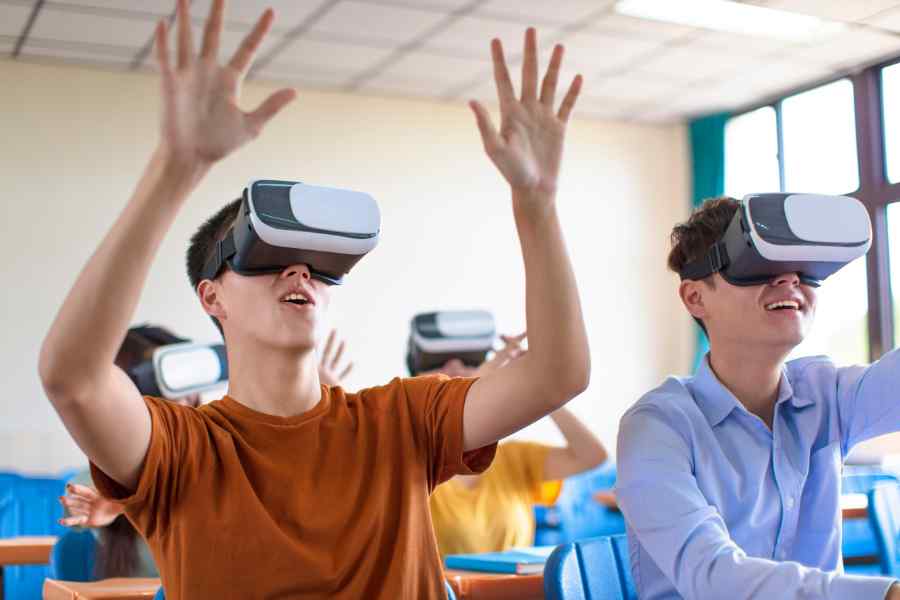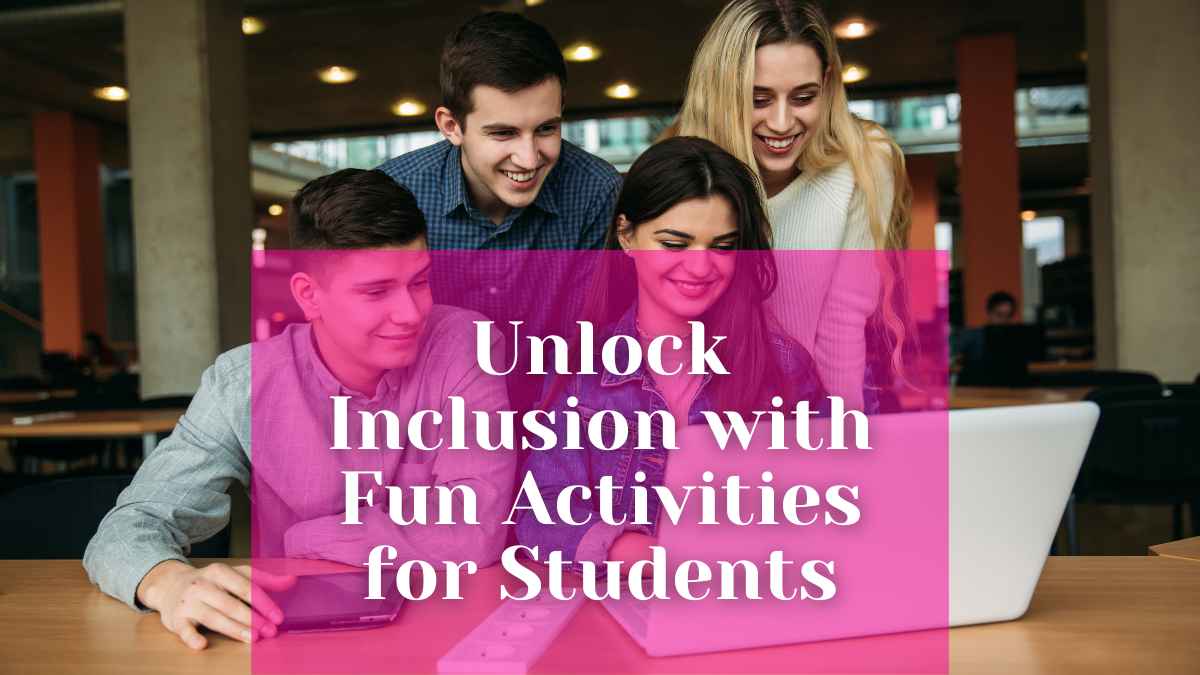Inclusion is a concept that has been gaining traction in the educational world nowadays. It is a practice that seeks to create an environment in which all students, regardless of their abilities, backgrounds, or needs, are able to participate and learn. Inclusion activities for students are an important part of creating an interactive classroom environment.
These activities can help to develop a sense of belonging and acceptance among all students and also provide new opportunities for them to enhance their skills and knowledge. In this article, we are going to explore the benefits of inclusion for students, strategies for creating an inclusive classroom environment, and activities that can be used to promote inclusivity and engagement.
We will also discuss how technology can be used to support inclusion and how music and art can be integrated into everyday lessons to increase student interest in the curriculum. We will show you a new aspect of these activities and introduce inclusion as a successful learning approach.
Looking Interesting? Just Go ahead and uncover the facts of how these collaborative learning activities, role-playing games, and self-advocacy projects can promote teamwork and cooperation among all students.
Table of Contents
Inclusion as a Successful Learning Approach
Inclusion is an educational approach that focuses on providing a supportive learning environment for all students, regardless of their abilities or disabilities. It seeks to ensure that every student gets the same opportunities and resources in order to reach their full potential.
Inclusion Activities for Students encourage self-advocacy, personal grooming, confidence building, and quick adapting styles through group projects, presentations, and role-playing games which promote a team-building approach. Adding inclusion activities in lesson plans creates a more equitable education system where everyone is welcomed and valued, expanding knowledge and adding something new to class activities.
Why Adapting Inclusion Activities for Students is Beneficial?
Engaging all students in the class can have a positive impact on both academic and social development. Research has shown that inclusion activities successfully create an environment where everyone feels free to ask, share, and be involved. It encourages collaboration among learners from different backgrounds and builds empathy and understanding between peers. Furthermore, it lets teachers understand and consider students’ needs while creating lessons.
Moreover, Inclusion Activities for Students offer equal opportunities to students with disabilities or special needs that make them valuable and develop self-esteem and confidence, which will benefit them not only in the classroom activities but also throughout their lives. Finally, inclusive classrooms often lead to higher levels of engagement among learners due to increased motivation when they feel included in the learning process.
Top 7 Inclusion Activities for Students
Here we are going to share some strategies that can help you to plan impactful inclusion activities for your students. These activities will develop empathy, tolerance, and acceptance among students and also meet educational goals by making your class more joyful for them.
1. Classroom Inclusion Activity

Inclusion Activities for Students are key elements to make any class productive. Teachers can employ a range of strategies to ensure inclusivity, such as encouraging collaborative learning, using accessible resources and materials, and promoting positive language to create a sense of community.
Technology and multimedia can also enhance classroom engagement and support learning for diverse learners. The ultimate goal of these strategies is to create an inclusive learning environment that fosters academic achievement and social growth for all students, regardless of their individual needs and abilities.
Inclusive classroom strategies basically aim to create a learning space that is equitable, supportive, and empowering for every student. These types of strategies introduce a new learning approach that generates an instant response to all the efforts of the class positively.
2. Inclusion Achievement Strategies for Students

It is difficult for students to feel valued and empowered. Teachers can use various strategies to achieve this goal. Positive language is also important in promoting mutual respect and building a classroom community.
Positive language refers to the words and phrases used by teachers to communicate with their students in an encouraging and supportive way. This can include using words of affirmation and praise to acknowledge students’ efforts and achievements, as well as offering constructive feedback in a helpful and empowering way.
Positive language can also foster better relationships between teachers and students, as well as among the students themselves, by promoting a culture of kindness, understanding, and cooperation. Overall, using positive language is a powerful tool for promoting inclusion and achievement in the classroom,
3. Technological Approach Activity for Students

Technology can play a vital role in creating a fast learning environment for all students with equal opportunities to succeed. Integrating technology into lessons can provide resources catering to individual needs. For instance, tools like Zoom and Skype and other educational apps such as Quizlet and Kahoot allow students to collaborate with each other in real time without any distance and management issues.
These technologies make it easy to engage, ask questions, and share their perspectives on any topic. Additionally, virtual reality (VR) headsets help visual learners to comprehend concepts and ideas in a better way. These tools remove communication gaps among students and enable them to work together efficiently to complete projects.
Lastly, voice recognition software is another useful technology that enables students with physical disabilities to participate actively in classroom discussions and complete tasks independently. By leveraging these technologies, teachers can create an unexpected and exciting environment that promotes active participation, critical thinking, and collaboration among students.
4. Learning with Sociability Strategy

To promote social interaction and ensure that all students have an opportunity to participate in the classroom, teachers implement these collaborative learning strategies. Group projects, presentations, discussions, simulations, and debates encourage students with diverse abilities and backgrounds to work together towards common goals while also better understanding each other’s perspectives.
By creating a welcoming and respectful atmosphere, teachers can encourage participation from all students. These Inclusion Activities for Students can allow them to express themselves and connect with their fellows on a different level. Online resources allow learners to interact with each other and access the same opportunities no matter where they are located geographically.
Moreover, these strategies in your teaching can create a more inclusive learning environment that promotes social interaction and encourages participation from all students in your class.
5. Learning with Fun Inclusion Activity

Teachers can incorporate music and art into everyday lessons to create an engaging and inclusive learning environment. These Inclusion Activities for Students can help them to connect with one another and also encourage creativity and positivity. Adding musical activities can leave a calming effect on learners, which can be specifically helpful for students who experience stress or anxiety.
Additionally, art projects, i.e., painting or drawing, give access to students to creative outlets that may not otherwise be available. Technological twists can create immersive and pleasant experiences for learners through the use of virtual reality (VR) headsets. It lets them explore concepts via visual learning, making their learning more interesting.
By integrating these types of inclusive strategies into the lessons, teachers will be able to engage all students in the learning process. This approach can benefit students of all ages and across a range of subject areas, making learning both fun and effective.
6. Energetically Learn & Fun Strategy

Inclusion activities involving role-playing games can be an excellent way to encourage student teamwork and cooperation. These types of activities are not based on physical strength but on problem-solving skills, which provides a level playing field for all participants without depending on their abilities or disabilities.
Role-playing games or any other Inclusion Activities for Students like that can create a safe and supportive environment for students to express themselves without fear of judgement from their peers. As a result, students who feel hesitation when speaking up in class can benefit greatly from these activities.
In addition to being effective, role-playing games can also be enjoyable and engaging for students. These fun games remarkably increase their motivation levels and overall engagement in class. Therefore, teachers can use these activities to create a dynamic and fun learning environment that promotes learning and inclusivity.
7. Collaborative Learning Inclusion Activities

Inclusion activities for Students, such as group projects and presentations, deliver a dynamic and enjoyable way for students to learn and develop basic skills. These activities offer a valuable opportunity for them to get self-advocacy, especially for those who lack the confidence to speak or participate in class.
By collaborating with learners from diverse backgrounds, these activities let them equally contribute and perform in class. Moreover, Including group projects in the strategy also offers a safe platform for students to practice public speaking and build their confidence without feeling hesitation by larger audiences.
These projects or presentations also encourage critical thinking and problem-solving abilities, which are essential to get a successful life. With these inclusive activities, students can learn and grow together in a supportive and inclusive environment where everyone’s unique perspectives and contributions are valued.
Conclusion
Inclusion activities aim to create a fair and inclusive environment in the classroom where every student, including those with disabilities, feels valued and respected. Teachers use multiple strategies, e.g., group projects and role-playing games, to increase student collaboration and understanding. They also ensure that every student has equal opportunities to succeed regardless of any favourites.
With the help of technology, like discussion boards and video conferencing tools, teachers can update their traditional classroom methods and let students engage with each other without any physical or geographical barriers. By adding art, music, and other creative strategies into their lesson plans, teachers can help students to fully reach their actual potential.
Reference

